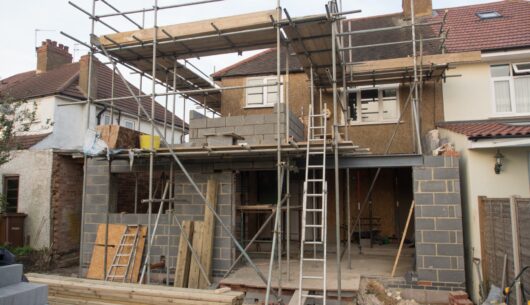Blog
LECA house – advantages and disadvantages
When starting to build a house, we more and more often start to wonder what building material is best for our future house. In addition to an important budget argument – it is known that everyone would like to spend as little money as possible on building a house, the desired energy efficiency of the building, the ecology of the materials used, or the individual needs of the investor are taken into account. Recent years have been a rich period for the construction industry in terms of emerging new construction technologies, and for supporters of traditional construction – also new building materials with increasingly better properties.
Table of contents
- Traditional construction – what building material to choose?
- Expanded clay house – what does it mean?
- LECA houses – advantages and disadvantages
Traditional construction – what building material to choose?
If you want to build a house in the traditional construction technology, i.e. using a brick wall, you can distinguish the following main building materials:
- Ceramic hollow brick – the most frequently chosen and most common due to the availability of materials, but also equipment and construction teams experienced in this field. The advantages are the speed of erecting walls and ease of processing as well as good acoustic and thermal parameters;
- Silicates – it is a healthy and ecological lime-sand building material, which provides a favorable microclimate in the building due to its high vapour permeability. It provides excellent acoustic insulation and protects against moisture and frost. However, it has low thermal insulation properties. Silicates are durable, but therefore also heavy, which means that the construction of silicate walls takes a long time;
- aerated concrete – has much better thermal conductivity coefficients than ceramic hollow brick, but it provides poor acoustic protection. It is a light material, less durable than ceramics, which may cause the need to design additional reinforcements of the structure. It is absorbent, so it requires quick protection against water. On the other hand, the advantages of aerated concrete are its lightness and speed of construction;
- expanded clay (so-called expanded clay concrete) – is another, one of the increasingly popular building blocks of brick walls. LECA houses have a number of special properties that are worth devoting more space to.
Expanded clay house – what does it mean?
LECA concrete is produced on the basis of artificial aggregate created by burning slate and clay. This building material has the form of a slotted hollow brick (similar to a ceramic one), or with an additional polystyrene insert. This design gives it the following properties:
- high vapour permeability;
- very high thermal insulation properties;
- very good acoustic protection;
- high resistance to biological agents;
- low water absorption (the wall does not require immediate plastering);
- high fire resistance.
Erecting walls with the use of expanded clay allows the use of even ordinary mortar or, in the case of single-layer walls, heat-insulating mortar.

LECA houses – advantages and disadvantages
The house built of expanded clay has practically no significant material defects. Although this building material requires attention due to its fragility (the possible need for additional reinforcement and reinforcement), this is not an obstacle to its practical use. A LECA house will have a number of important advantages, which include:
- low weight of the material, which affects the speed of wall construction;
- rough surface makes plastering easier;
- excellent acoustic insulation, so the house can be placed near noisier streets;
- very good properties in terms of thermal insulation, which provides the highest possible protection against frost, moisture and overheating;
- high protection of household members against mold and fungi;
- durability – the positive properties of expanded clay concrete last for decades.
LECA concrete is considered to be one of the most expensive building materials. However, in the end, taking into account a number of advantages of its use, such an investment should be considered profitable. LECA houses are safe for household members, durable, quick to build and provide high energy efficiency rates.
On our blog you will also read what heating in a passive house looks like and what concrete to choose for the foundation.